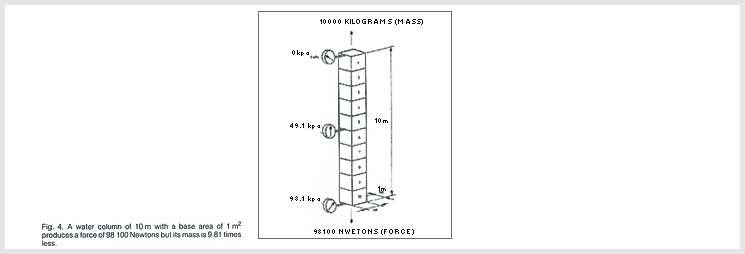Under static conditions and without any
external forces, the pressure at any point within a fluid system is
proportional to the height of the fluid column above that particular point
(fig. 4). Torricelli called the pressure at the bottom of the fluid column
(tank) the "head pressure". All that is required to work this
pressure in Pa is the specific weight of the fluid in the tank and the force
that is produced by its weight. For example, a water column of 10 m height
with a base area of 1 m2 weighs 10 000 kg (specific weight for water is 1000
kg per 1 m3).
The SI unit of pressure is Pascal. As the Pascal is a very small unit, the
prefixes kilo and mega are used to express pressure in industrial and mobile
hydraulics. European countries predominantly use the unit "bar" to
express pressure, where one bar equals 100 kPa or 100 000 Pa.




